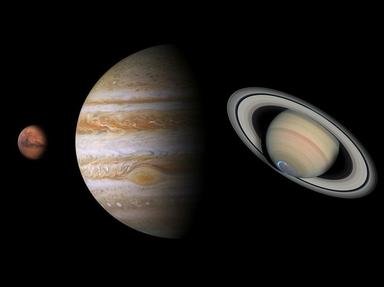Quiz Answer Key and Fun Facts
1. Approximately how long, in Earth-years, would it take the planet Mercury to make 1000 revolutions around the sun?
2. Venus, the planet closest in size to Earth, has some unusual characteristics. Which one of the following is true?
3. A year is constant. It is the time it takes Earth to revolve around the Sun, which is 365.25 days. Is a day (time for the earth to rotate on its axis once) also constant?
4. Theories differ on how the Moon formed but the giant impact hypothesis is the most widely accepted. What is the basis of this theory?
5. Mars is often pitched as the one planet that is closest to Earth in attributes. Which of the following attributes is least like the same attribute on Earth?
6. Some astronomers believe Jupiter to be a failed star. Could this gas giant ever have been a star at some point of its 4.5 billion year existence?
7. Saturn is the fifth most visible object in space from Earth and is known for its bright rings, measuring 175,000 miles (282,000 km) across. How thick are these rings?
8. Uranus, the only planet named after a Greek rather than a Roman god, is the seventh planet from the sun. Which of the following fun facts is true?
9. Neptune is the planet with the largest orbit around the sun. Which of the following is *NOT* true about this planet?
10. While this quiz has concentrated on planets circling the Sun, the Sun and its planetary entourage also orbit the Milky Way. Which of the following is closest to the time it takes for the Sun to orbit the Milky Way?
Source: Author
1nn1
This quiz was reviewed by FunTrivia editor
rossian before going online.
Any errors found in FunTrivia content are routinely corrected through our feedback system.
